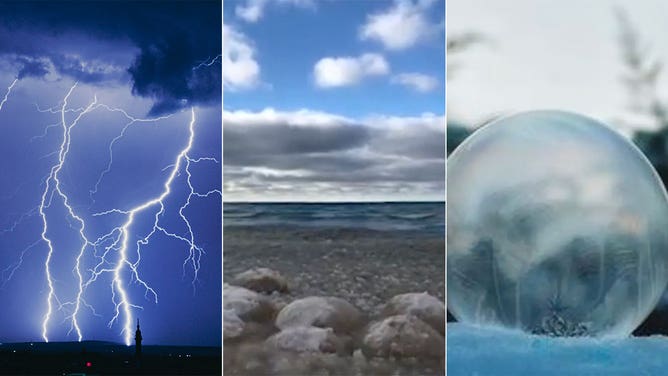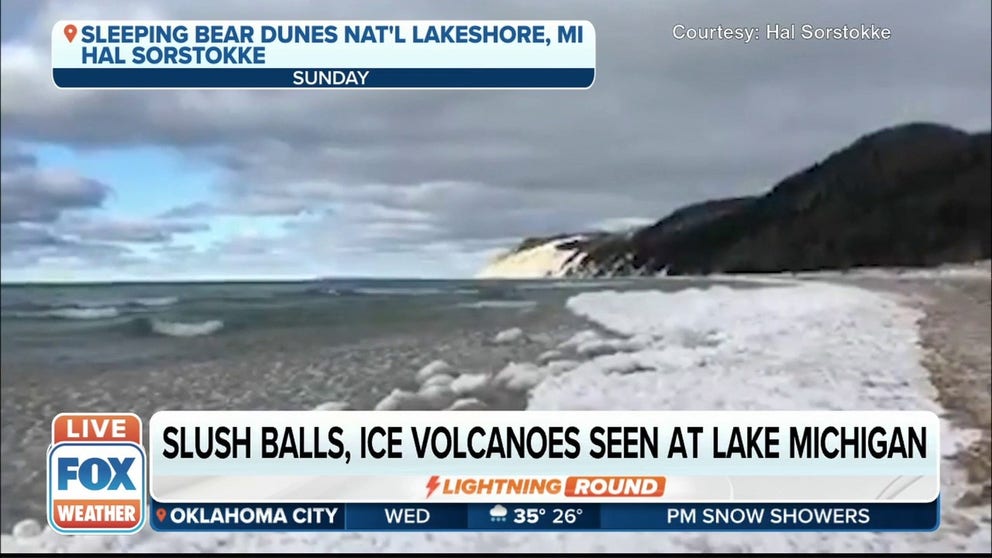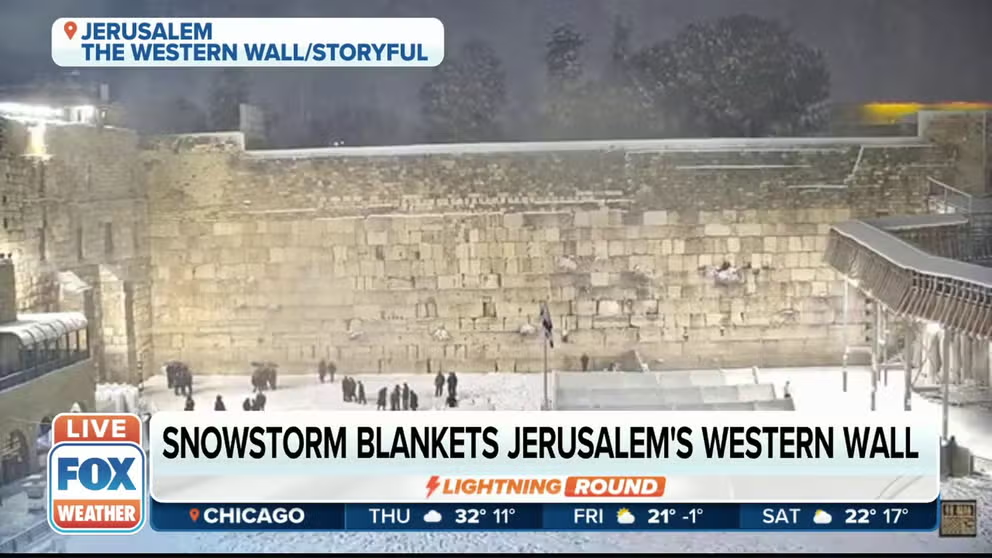Lightning Round: How COVID lockdowns reduced lightning; ice balls; frozen bubbles
These are 3 weather stories that had us talking this week

(Getty Images/Unsplash/Hal Sorstokke)
"Lightning Round" is a daily segment on FOX Weather Sunrise that shows you the more interesting side of weather.
Here is a look at just a few of the stories we talked about this week that are sure to satisfy the weather geek in all of us.
Lightning decreases during COVID-19 lockdowns
Even though our world was struggling during the COVID-19 lockdowns of 2020, Earle Williams, a physical meteorologist at the Massachusetts Institute of Technology, found a light at the end of the lockdown tunnel.
Williams and the team started a study to research lightning activity between March and May 2020. This study found that countries like Africa, Asia and Europe saw a 10% to 20% decrease in lightning strikes. As the study advanced, research showed the U.S. had a minor decrease compared to other nations.
Overall, the lockdowns/lighting activity research concluded that the decrease in the presence of aerosols during the three-month period caused lightning activity to decrease.
FOX Weather Lightning Round: 3 Must-See Weather Stories On 1/24
FOX Weather Lightning Round: 3 Must-See Weather Stories On 1/24/22.
Rare phenomenon: Ice balls and ‘ice volcanoes’
A couple of rare winter weather phenomena hit the shoreline of Lake Michigan. Temperatures and conditions must be aligned to create these meteorological marvels, known as ice balls and "ice volcanoes."
On Jan. 23, the frozen balls rolled up on the shores of Lake Michigan. Chunks of ice or slush floating in the water causes their formation. As the slush and icy water collide against the shoreline or rocks, friction helps mold the ice into a circular shape. If the perfect conditions continue, the diameter of the ice balls can grow.
HOLY ICE BALLS! VIDEO CAPTURES RARE SIGHT ALONG MICHIGAN LAKE
So-called "ice volcanoes" are rare, and weather conditions need to be perfect for them to occur. It is not lava that's launching from the top of these frozen vents. Instead, it is slush shooting into the air. These unusual sights form when icy water ebbs and flows during below-freezing temperatures with a minimum of 25 mph onshore winds.
FOX Weather Lightning Round: 3 Must-See Weather Stories On 1/26
FOX Weather Lightning Round: 3 Must-See Weather Stories On 1/26/22.
Putting bubbles on ice
Over the past week, some regions of the U.S. experienced freezing temperature, ice, snow, rain and winds.
In Grand Rapids, Michigan, the temperatures dropped below zero, but the bitterly cold weather did not stop Stacey Anne Leeson from having fun with Mother Nature. She lives in Grand Rapids and decided to turn bubbles to ice.
For ice bubbles to form correctly, the conditions need to be perfect with below-freezing temperatures, no wind and a freshly fallen snow surface. These conditions are essential to creating a beautifully formed bubble on ice without popping.
Want to know how to make your own ice bubbles? Click here. If not, just watch the amazing video below.
FOX Weather Lightning Round: 3 Must-See Weather Stories On 1/27
FOX Weather Lightning Round: 3 Must-See Weather Stories On 1/27/22.
You can catch "Lightning Round" from 6 a.m. to 9 a.m. Eastern during FOX Weather Sunrise.


